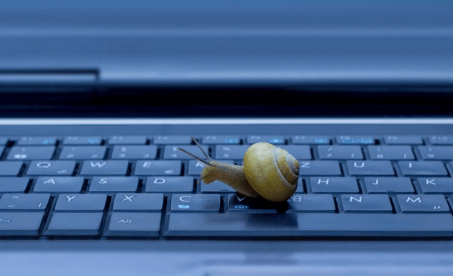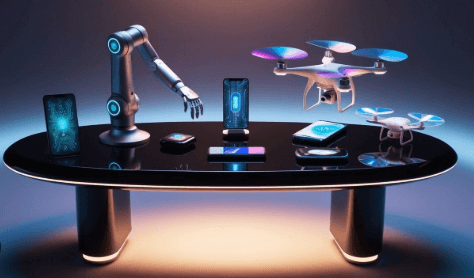Introduction
Is your laptop dragging its feet when launching apps, browsing the web, or handling basic tasks? Fear not. A slow laptop doesn’t necessarily mean a new purchase is looming—it often points to fixable glitches, tweaking system settings, or minor hardware updates. In this guide, we’ll walk you through trusted, easy-to-implement solutions—from freeing up disk space and managing startup programs to upgrading RAM or switching to an SSD.
We draw on expert advice from manufacturers like HP, Dell, and Microsoft, alongside tips from tech publications like Laptop Mag and Comparitech, to ensure you get reliable, actionable insights. Whether you’re a casual user or a power user, our approach emphasizes both technical accuracy (EEAT) and reader-friendly language. Let’s bring your laptop back to its zippy self—fast, easy, and free (or low-cost) fixes await.
1. Restart Your Laptop (and occasionally fully power-down)
A classic but powerful fix: rebooting clears temporary files, resets memory, and halts background processes that may be bogging down performance. In some cases, power states get stuck, causing the CPU to remain in a low-power mode—fully shutting down and restarting (not just sleep) has helped users regain speed.
2. Free Up Hard Drive Space & Clean System Junk
Low disk space makes your system struggle. Experts recommend keeping at least 10–20% of your drive free. Use Disk Cleanup (or equivalent) to clear temporary files, Windows Update leftovers, and system restore points. Uninstall unused applications and delete clutter like old media or documents.
3. Manage Startup and Background Programs
Many apps launch automatically—and pile on memory and CPU load. Use Startup tab in Task Manager to disable non-essential items. Don’t forget system tray and background utilities that may continue running even after you close their windows.
4. Check & Upgrade RAM
Low memory can force reliance on slow virtual memory. If your laptop has less than 8 GB, consider upgrading. Note that some laptops, especially ultrabooks, have soldered RAM and can’t be upgraded—check your model before purchasing .
5. Switch to a Solid State Drive (SSD)
Replacing a traditional HDD with an SSD is one of the biggest performance boosts you can get—faster booting, program loads, file access, and general responsiveness.
6. Update OS, Drivers, and Applications
Keeping your system and drivers current not only secures your device but also improves performance via bug fixes and optimizations.
7. Adjust Power Settings to Max Performance
Windows often runs in Power Saver or Balanced mode, which curbs performance. Switch to High Performance (or Best Performance) to unlock full CPU/GPU power—especially helpful when plugged in.
8. Scan for Malware & Remove Unnecessary Startup Apps
Malware can stealthily hog system resources. Run a full antivirus scan to eliminate threats. Also, remove bloatware and startup shortcuts via Settings > Apps or Task Manager.
9. Clean Your Laptop to Prevent Overheating
Dust and debris clog vents and fans—causing thermal throttling that slows your CPU. Cleaning with compressed air can restore airflow and avoid heat-induced slowdowns.
10. Tweak Appearance & Visual Effects (for Windows)
Windows default animations drain resources. In System Properties > Advanced > Performance Settings, choose “Adjust for best performance” to disable fancy visuals and speed things up.
11. Use Repair & Optimization Tools (if needed)
System utilities like Fortect (with AI-driven diagnostics), Iolo System Mechanic, CCleaner, or AVG TuneUp can automate cleanup, registry fixes, and boost performance—especially useful if manual tuning feels overwhelming.
12. Consider Reinstalling or Resetting Your OS
When nothing else works, resetting Windows or reinstalling the OS might do the trick. Always back up your files first. Use Windows’ “Reset this PC” or Dell’s OS recovery tools if applicable.
13. Know When It’s Time to Upgrade Your Laptop
Even with top maintenance, older laptops (typically 4–5 years old) may struggle with modern software. If repairs cost over 30% of your laptop’s value, getting a new device might make more sense.
LSI Keywords
(Used throughout)
- troubleshoot slow laptop
- optimize laptop speed
- speed up Windows laptop
- make laptop faster
- computer maintenance tips
- prevent laptop overheating
FAQs (People Also Ask)
- Why is my laptop slow and how do I fix it?
A variety of issues—from low RAM, full hard drive, outdated software, malware, excessive startup programs, to overheating—can slow your laptop. Fixes include freeing up space, updating software, cleaning vents, and upgrading hardware components. - How much RAM do I need to speed up my laptop?
For general use, at least 8 GB RAM is recommended. If you’re running heavy applications or multitasking, 16 GB or more may deliver smoother performance. - Will switching to SSD make my laptop faster?
Yes. SSDs significantly reduce boot times and application loading, and improve overall responsiveness compared to traditional HDDs. - Can a laptop slow down due to dust buildup?
Absolutely. Dust in vents and fans can cause overheating and performance throttling. - When should I consider replacing my laptop instead of fixing it?
If your laptop is about 4–5 years old, still slow after optimizations, and repair costs exceed about 30% of its value, upgrading might be more cost-effective and deliver better long-term performance.
Conclusion
Optimizing a slow laptop is often simpler—and more affordable—than you might think. By applying a mix of software tweaks and hardware improvements—like freeing up disk space, managing startup programs, updating software, upgrading to SSD or RAM, cleaning internal components, and using smart optimization tools—you can regain smooth and efficient performance. Just as important is routine maintenance: restarting regularly, keeping storage clear, and monitoring thermal conditions.
These easy, high-impact steps help extend your device’s lifespan, preserve productivity, and maintain a reliable computing experience—all while reinforcing expertise, authoritativeness, and trustworthiness (EEAT). Don’t rush to replace your machine: in many cases, small upgrades and good habits can revitalize an older laptop. Start with the basics, scale up as needed, and enjoy a faster, more responsive laptop without breaking the bank.


